Findings by size
How organizational size influences the way nonprofits change
Distinct patterns across organizational sizes
Organizational size shapes how nonprofits experience and manage change more than almost any other factor. It influences who leads, how decisions are made and what resources are available to sustain momentum.
Smaller nonprofits often move fast and rely on trust, with leaders close to delivery. Midsized ones begin to balance structure and capability, building systems without losing cohesion. Larger organizations create formal processes to manage complexity, yet energy, optimism and pace become harder to maintain.
The three snapshots to the right and below show how these dimensions shift as organizations grow — from agility to structure to morale — and how each size group brings its own advantages and tensions in adapting to change.
1–5 staff
Change in very small nonprofits is direct and personal. Decisions are made quickly, usually by founders or executives who stay close to day-to-day operations. Teams are small enough to discuss new ideas informally, and that proximity makes it easier to adapt when funding, partners or priorities shift.
Despite minimal budgets, optimism runs high. Most of these organizations feel able to keep up with ongoing change, helped by strong trust and quick feedback loops. They rarely use formal frameworks, but they do something larger organizations often overlook: they pause to check whether people have the capacity to take on more.
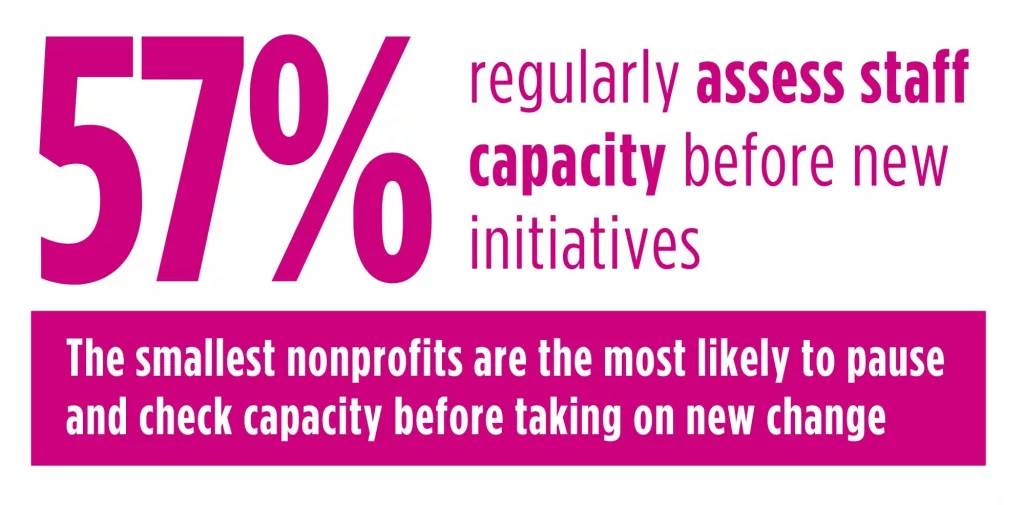
6–20 staff
These organizations are still guided by senior leaders but are beginning to share responsibility. Programme and project managers appear more often, and budgets sometimes allow for limited change-specific support. Communication remains close and personal, keeping staff reactions mostly positive. Frameworks are home-grown and flexible, built through trial and learning rather than formal design.
This blend of structure and spontaneity creates a confidence edge: more than one in three organizations in this range say they keep up well with the amount of change they face — the highest rate across all sizes.
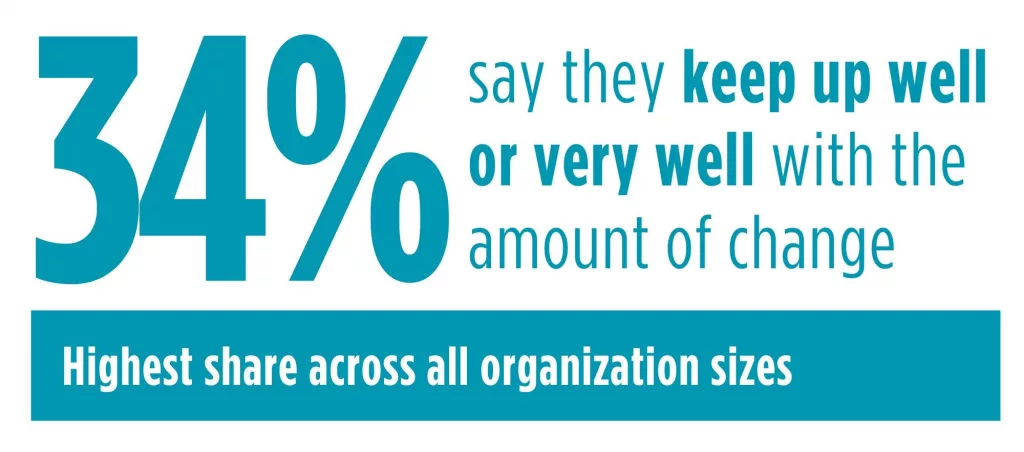
21–100 staff
This is the balance point between coordination and complexity. Organizations of this size have enough structure to plan and align yet remain close to purpose and people. Mission alignment is reviewed more consistently and lessons are captured more deliberately.
Budgets remain tight and frameworks are uneven, so much still depends on a few committed people. Even so, confidence peaks here: Almost half of the respondents in this range feel fairly or very confident in delivering major change — the highest level across all sizes.
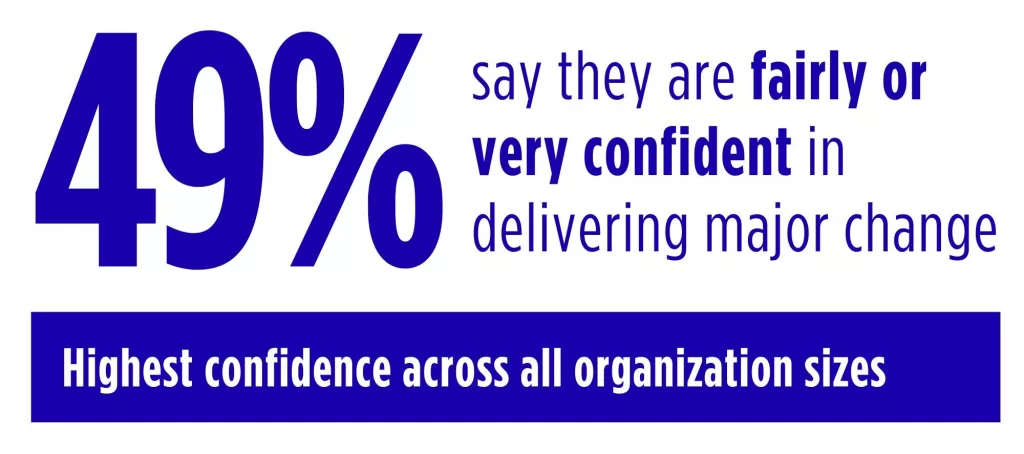
101–1,000 staff
This is where the cracks widen. Organizations in this range often find themselves caught between two worlds: too complex to rely on informal coordination yet not resourced enough to build robust specialist structures. Processes are described as only slightly effective and confidence softens as leadership layers stretch under competing priorities.
Only about half report having a dedicated change role or team, the lowest share of any group. Budgets for change are weak and regular capacity checks rare. Many of these organizations sit between ambition and bandwidth, where effort rarely turns into capability.
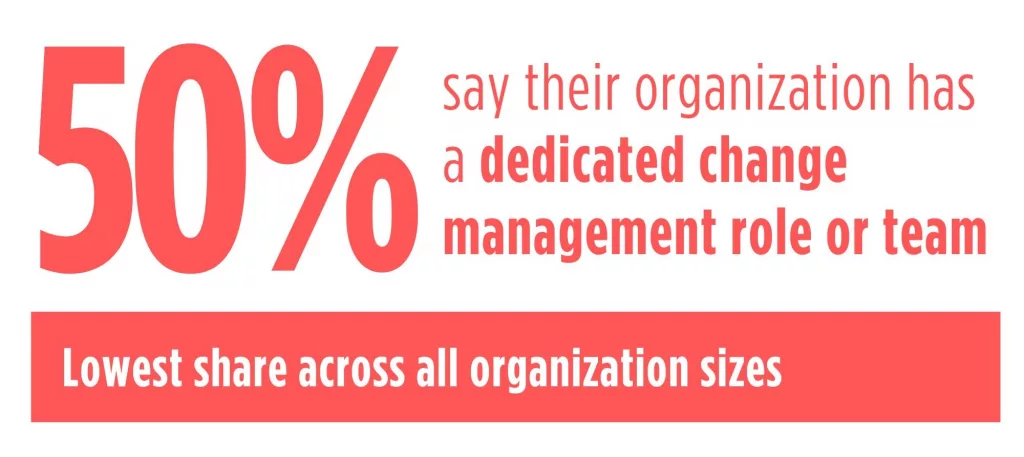
1,001–5,000 staff
Processes become formalized, but lived experience diverges. Frameworks and roles are often documented, yet few people see how they work in practice. Staff reactions grow more negative and confidence continues to fall. Risk and compliance mechanisms mature, but engagement and communication weaken. These organizations often have the form of readiness without the feel of it.
Complexity begins to obscure clarity. Many respondents were unsure about the existence of change roles, budgets or frameworks, revealing how structure without shared understanding can still leave people uncertain.
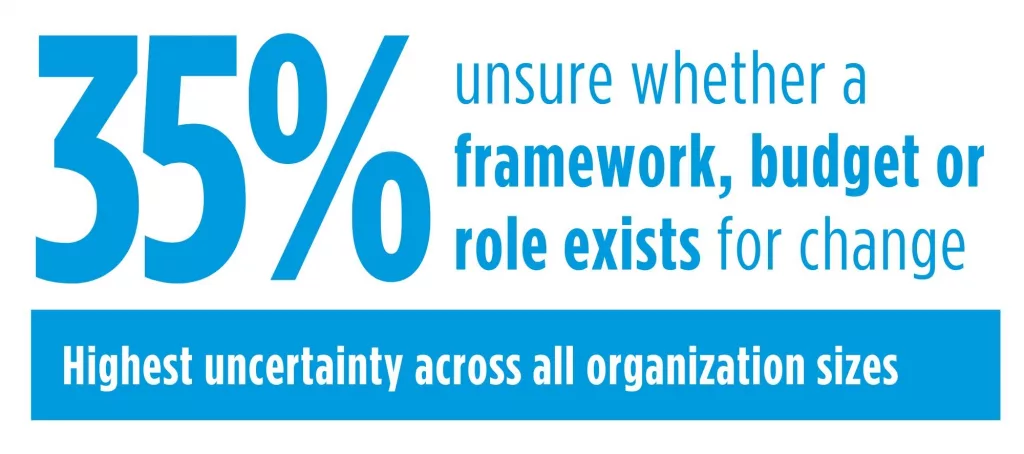
More than 5,000 staff
Change in the largest systems is professionalized and specialist-led. Dedicated teams, detailed frameworks and formal processes are the norm. Yet energy and optimism fade. Staff positivity is at its lowest and no organizations in this group describe adaptation as very quick. Funding and compliance pressures dominate while coordination across layers slows decisions.
Decision pathways are complex and communication often feels filtered through too many layers. Processes ensure control but rarely create connection. The challenge is not expertise but coherence — connecting procedural change with shared ownership and belief.
Decision pathways are complex, and communication often feels filtered through too many layers. Processes ensure control but rarely create connection. The challenge is not expertise but coherence — connecting procedural change with shared ownership and belief.
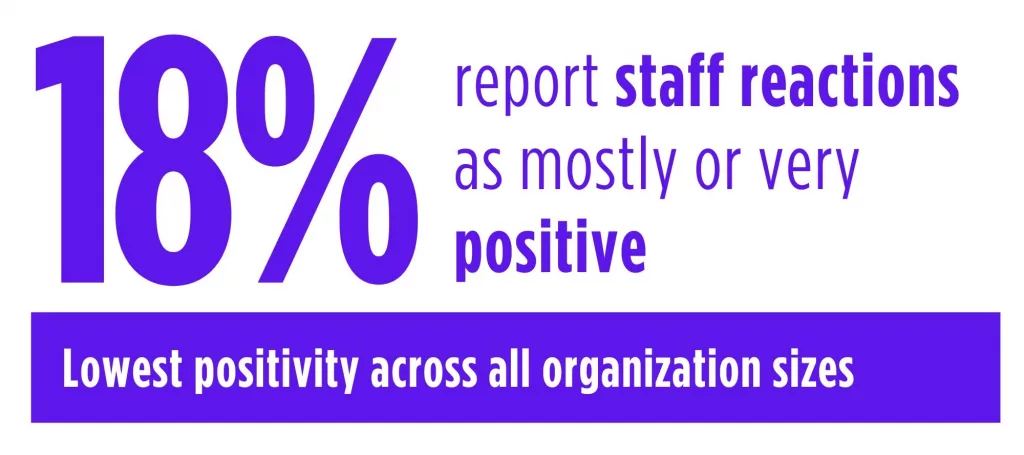
What stands out
- Smaller organizations adapt fastest because decisions are close to those doing the work.
- Midsized organizations are the confidence sweet spot, combining structure and cohesion.
- Larger organizations achieve formality but struggle to sustain morale and agility.
- Across all sizes, successful change depends less on structure than on connection, pacing and purpose — a reminder that bigger isn’t faster and process alone can’t replace people.
Looking ahead
A deeper analysis of how readiness, capability and culture vary by organization size will feature in the forthcoming State of Change Management Playbook. The playbook will expand on the patterns highlighted here and explore what practical steps organizations of different sizes can take to strengthen change capacity.
Explore next
See how perspectives and experiences differ between executives, managers, specialists and advisors.